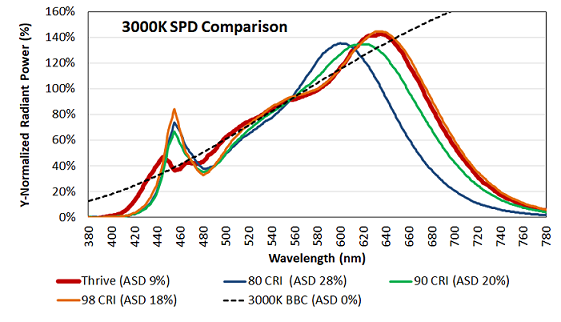People are getting more aware of how natural lighting affects the body as well as the psychological feelings. Lighting design and LED technology also address how the artificial light source can mimic the light in the nature. But how do we measure the “naturalness” of light? Bridgelux introduced a new metric to quantify the naturalness.
Bridgelux announced that it has developed a new metric to enable objective comparison of light sources to natural light, since standard lighting quality metrics such as CRI and TM-30 do not fully address the naturalness. The LED company introduced the Average Spectral Difference (ASD) metric to address this shortcoming in available light quality metrics.
According to Bridgelux, ASD provides an objective measurement of how closely a light source matches natural light over the visible spectrum, averaging the differences of the spectral peaks and valleys between a light source and a standardized natural light source of the same CCT. The ASD value is a quantitative metric of the SPD differences shown in the figure below.

(Image: Bridgelux)
ASD represents the difference in spectra compared to natural light, therefore the lower the ASD value, the closer the match to natural light. The Bridgelux ThriveTM LED light source family has been engineered to provide the closest match to natural light available in the market.
The company developed the new metric and natural light mimicking product to target the market of human-centric lighting. Brian Cumpston, VP Solutions Development of Bridgelux, said, “We hope this new metric will be broadly adopted in the lighting industry to provide new insight into naturalness beyond CRI and TM-30.”












